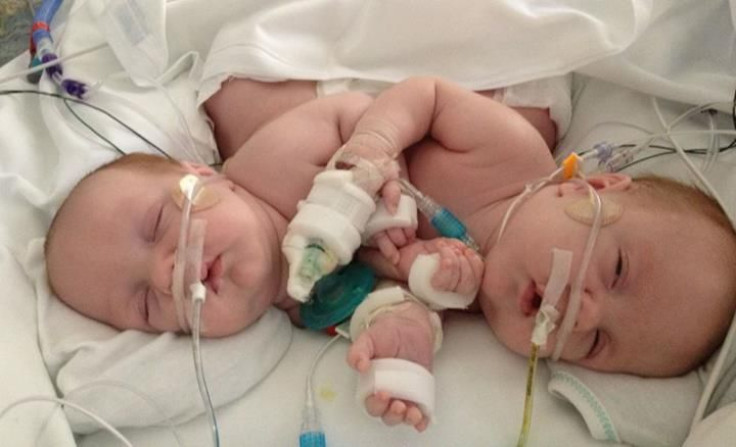Conjoined Twins Separated Last August Expected To Be Released From Hospital Today

Conjoined twins Owen and Emmett Ezell were not expected to live for very long after their birth in August 2013. Today, the two boys have not only been successfully separated, but will leave the Dallas hospital that they have called home for the past eight months and move into a rehabilitation center. Their parents, Dave and Jenni Ezell, could not be more thrilled, after only a year prior they were told by doctors that there was little hope that the babies would survive.
The boys were born conjoined just below the breast bone to just below the belly button, The Huffington Post reported. Their parents were told that they were expecting conjoined twins when the mother was 17 weeks pregnant. Once the boys were born there were a series of tests conducted to see exactly how many connections they had. It was discovered that the twins shared a liver, intestines, and had an approximately 3-by-5 inch area on their lower stomach that wasn’t covered by skin or muscles. The surgery to separate the twins lasted nine hours long. The team of surgeons separated the boys liver and intestines; however, the most difficult part was separating the shared blood vessel in the liver.
The newest update on the boys’ condition revealed that they are no longer being fed through an IV but are continuing to be fed through tubes in their abdomens. Also, instead of being hooked to breathing machines, the young boys are now only need the assistance of a trachea tube.
Conjoined twins are an extremely rare occurrence, when two babies are born physically connected to each other. The condition develops when an embryo partially separates to form two individuals. Conjoined twins are most often connected at the chest, pelvis, or buttocks, but the connection can occur in other areas of the body as well. They may also share internal organs. Most are stillborn or die shortly after birth. Those that survive can be surgically separated. Their survival rate depends on where the twins are joined and how many and which organs they share. In the rarest of cases, twins may be asymmetrically conjoined, with one twin smaller and less fully formed than the other — something known as parasitic twins.



























